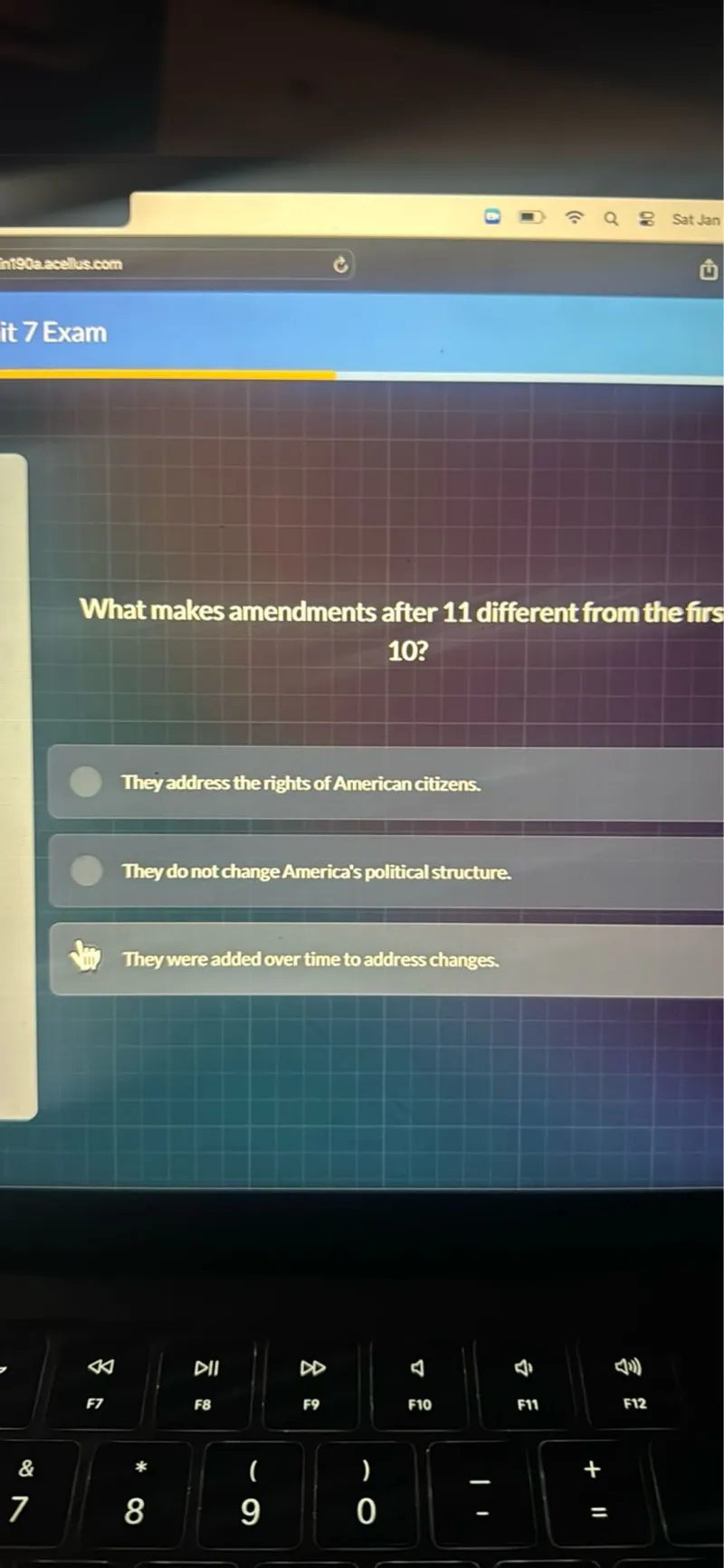Questions: What makes amendments after 11 different from the first 10? They address the rights of American citizens. They do not change America's political structure. They were added over time to address changes.

Transcript text: What makes amendments after 11 different from the first 10?
They address the rights of American citizens.
They do not change America's political structure.
They were added over time to address changes.





